From Learned Helplessness to Learned Optimism
“Nothing good happens to me”,
“No matter what I do, things just happen and that´s it”



Dogs could learn that they had no control over an adverse situation, and this interfered with their subsequent ability to learn new ways to escape trauma (Seligman, 1975).
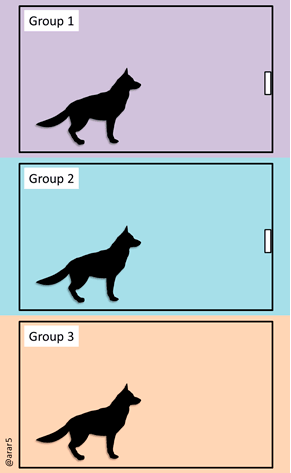
Phase I
Group 1 was introduced in a metal cage in which they received electric shocks of approximately 6.0 milliamps of intensity every 5 seconds, which could be interrupted by pressing a panel with the nose (snout).
Group 2 was also introduced in a metal cage and received electric shocks in the same amount, duration and intensity as Group 1, with the difference that they did not have any control over the discharge, since pressing the panel did not interrupt the same.
Group 3, being the control group, did not receive any downloads.
Phase II (24 hours later)
- Each dog was placed in an electrified cage, which was divided into two areas by a barrier at the height of the back of the dogs.
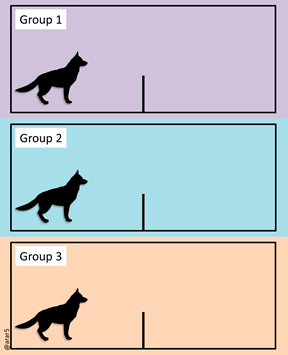
The 3 groups were subjected to an escape-avoidance training, where before the electric shock a signal was emitted (decrease of the lights) that indicated the moment to jump the barrier to avoid the electric shock.
In case they will not execute that behavior, the dog would receive the discharge, to which he could escape by jumping the barrier. If the dog did not jump the barrier after 60 seconds under the discharge, the experiment was stopped.
Group 1 and Group 3 (control) showed a good performance in the experiment, jumping the barrier without difficulties.
Group 2 was significantly slower to respond and 6 out of 8 dogs did not escape at all, remaining inert.
Conclusions
It was not the discharge itself, but the inability to control, which prevented the dogs from learning to escape.
Observations
- One out of every three dogs that were being induced impotence did not succumb to it.
- One in ten dogs in the control group had given up when entering to Phase II.


Based on the results of the experiment, a first theory about Learned Helplessness emerged, defining it as:
A psychological state that appears frequently when events are uncontrollable, when no matter what we do, the same will always happen (Seligman, 1975).
Basically, when the dog faces an event (electroshock) that is independent of its responses (jumping, barking, running), learns that this event is exactly independent of its responses .
Extrapolating this theory to human behavior, Seligman (1975) began to illuminate the impact that impotence can generate on a behavioral, cognitive and emotional level.
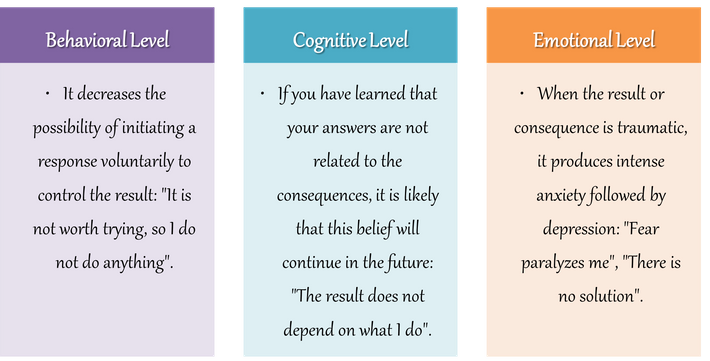
This first approach to the theory of learned helplessness, allows us to understand to some extent why sometimes adverse situations can lead to a pit of despair, however, the issue does not end here.


In 1971, Donald Hiroto prepared an experiment to induce Impotence Learned in humans following the parameters of the experiment with dogs, substituting electrical discharges for the emission of a loud noise (Seligman, 2004).
At the end of the experiment, Hiroto contacted Seligman to communicate the results:
- The subjects of the group who could not stop the noise in Phase I of the experiment, gave up in Phase II, without even trying anything.
- The other subjects, those who had managed to silence the noise in Phase I and those in the control group, easily learned what responses to emit to turn off the device that caused the noise in Phase II.
- One in three people did not develop helplessness despite not being able to silence the noise in Phase I.
- 10% of the subjects in the control group made no attempt to stop the penetrating noise in Phase II.
Of these results, strikingly similar to those of the experiment in dogs, new questions emerged:

Why is defenselessness chronic in some people and not in others?
Why do some people generalize helplessness to all areas of their lives and others do not?


Garber and Seligman (1980) reported that they found the answers to these questions when they reformulated the theory by adding attributional analysis. This means that they began to take into account the explanation given by each person to the lack of relationship between the response issued and the result obtained.
This led to the so-called Explanatory Style, which is defined as:


A cognitive variable of personality that shows how human beings explain to themselves the reasons for events. In this way, the explanatory style allows us to understand the diversity of responses that people can give to uncontrollable events (Buchanan and Seligman, 1995).
HEY: Uncontrollable Events!
Here Seligman begins to notice that not only adversities can induce the learned helplessness, since any situation where there is no relationship between the behavior and the result, can generate it. In this way, failure and trauma are no longer under the microscope, achivements and success come to accompany them.
How is that possible?
This reformulated theory "not only refers to negative events but also when there are positive events where there is no contingency between the response and the result can produce helplessness, that is, we not only refer to failures but also to events where there is no contingency" (Garber and Seligman, 1980, p.12).
Therefore, if when you achieve a good result you think it has been a matter of luck, pay attention to what follows.


According to Seligman (2011), Explanatory Style is composed of two dimensions that allow you to determine if your style is pessimistic or optimistic:
1) Permanence:
Will it affect your life forever or momentarily?
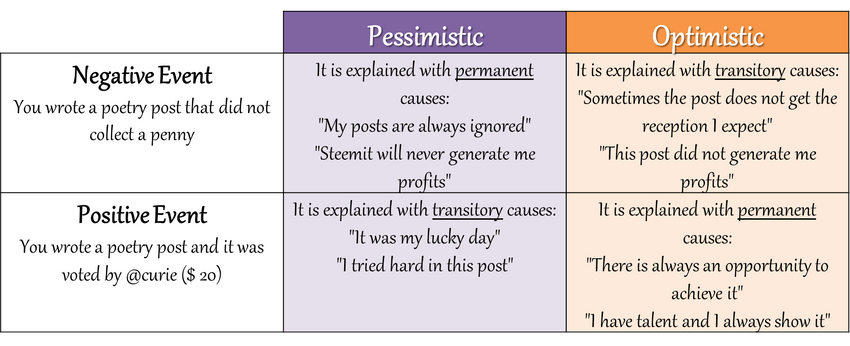
As you can see, pessimistic style is composed of permanent patterns for negative events and transitory patterns for positive events. On the other hand, people with optimistic style attribute transitory causes to failures and permanent causes to achievements and successes.
2) Pervasiveness:
Does it affect all areas of your life or only one in particular?
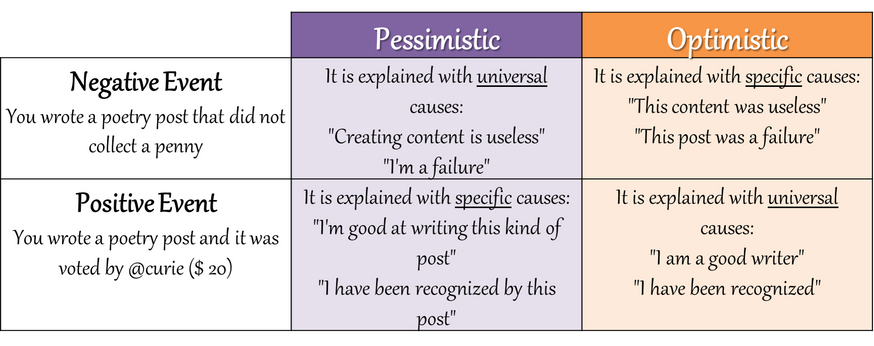
As you can see, pessimistic style is made up of universal patterns for adverse events and specific patterns for pleasant events. On the contrary, optimistic style people attribute specific causes to the failures and universal causes to the triumphs.
In this way, the explanation that each individual attributes to the lack of relationship between the response and the result, influences expectations about uncontrollable situations that arise a future.
It should be noted that Explanatory Style can be influenced by society, temperament, and life experiences that you accumulate, whether they are successes or failures. In addition, this theory suggests that pessimism is an important risk factor for depression.
Can anyone stop being pessimistic?


Seligman (2011) reports that optimism and hope are beliefs that generate positive emotions about the future, and that can be developed. If you are a person who until now uses a pessimistic style, there are two things you can do:
A psychologist can help you without any doubt, to transform those pessimistic guidelines and beliefs that detract well from your life. As for the ABCDE model, it is a method developed from the ABC model proposed by Albert Ellis as part of cognitive psychotherapy, and basically consists in learning to detect and refute pessimistic thoughts, through a record.
When you realize that you are developing a pessimistic thinking, put the ABCDE model into practice.
- Adversity: describes the event, what happened? What is the situation?
- Belief: what have you thought about that event? What previous ideas did you have regarding the situation?
- Consequence: How did you feel thinking that way? What did you do as a result of those ideas?
- Disputation: What is the proof that supports this belief? What are the possible causes of this event? How many possibilities are there really that the worst happens? Is the belief destructive? Can the situation be modified? What can I do to get it?
- Energization: How do you feel after refuting the pessimistic idea? What did you do next?
Example:
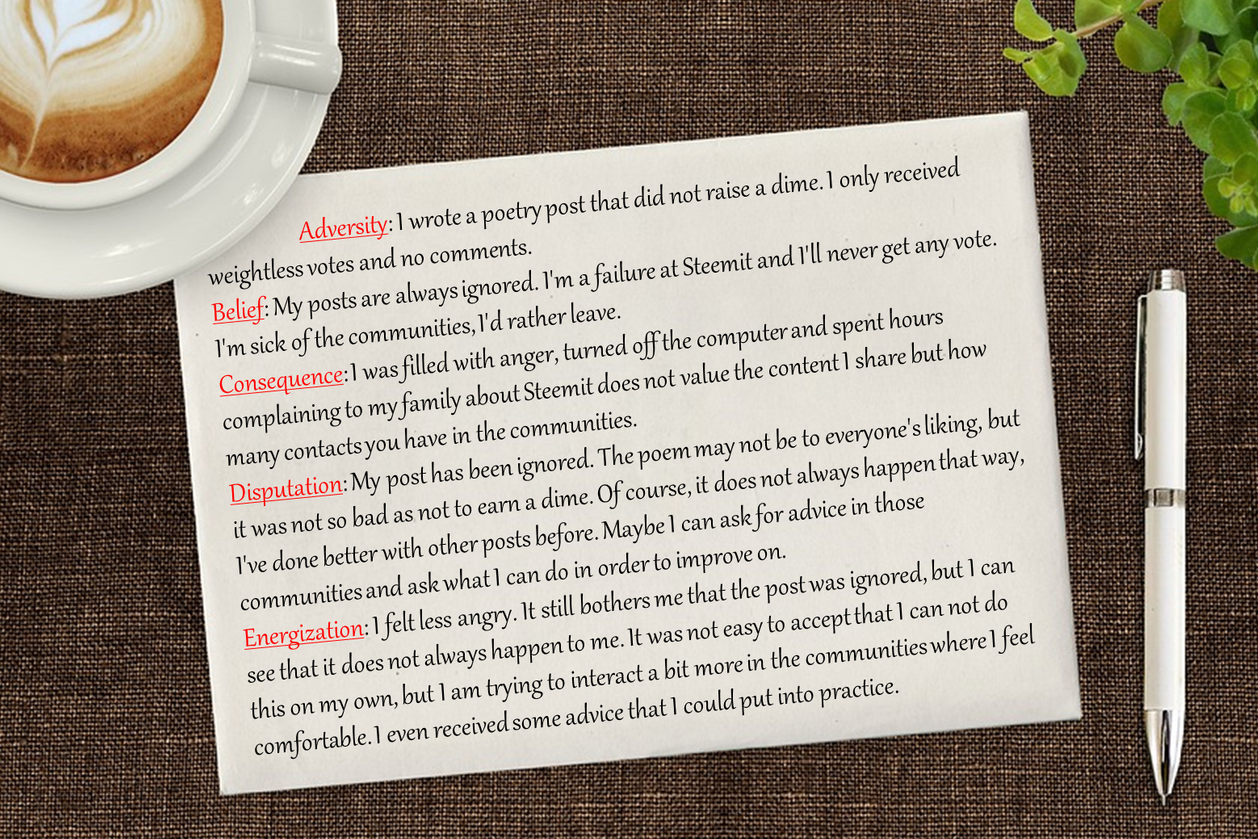
Reality is that there are many situations in life that can be adverse. When these are presented, pay close attention to what you think about them and what you say to yourself, this internal dialogue is the key to identify if we are seeing things with the glasses of pessimism. If so, do not stay inert and helpless, seek professional help, surround yourself with people who give you a different perspective and remember that the important thing is not if you have control over the situation.

Images Sources and gifs:
- "The Inner Storm" gif created by me from the adaptation made to the Image under Creative Commons CCO de Pixabay
- "Phase I" and "Phase II", gifs created by me from the Image under Creative Commons CCO de Pixabay
- "Doing Research", Image under Creative Commons CCO de Pixabay
- "Questions", Image under Creative Commons CCO de Pixabay
- "ABCDE Register", adaptation made by me from the image under Creative Commons CCO de Pixabay
- Support tables were created by me in Power Point 2016, as well as the separators.
- Subtitles were created by me from the Image under Creative Commons CCO de Pixabay
Consulted References:
- Buchanan, G. y Seligman, M. (Eds.) (1995) Explanatory style. Hillsdale, N.J.: Erlbaum
- Garber, J. y Seligman, M. (Eds.) (1980) Human helplessness: Theory and applications. New York: Academic Press
- Seligman, M. (1975). Helplessness: On depression, development, and death. San Francisco: W. H. Freeman
- Seligman, M. (1991) Learned optimism. New York: Knopf
- Seligman, M. (2002) Authentic Happiness. Great Britain: Nicholas Brealy Publishing


If you are new to Steemit, I invite you to know the @swimproject initiative, and together we will know great tips to learn how to swim in this ocean.

This post was shared in the Curation Collective Discord community for curators, and upvoted and resteemed by the @c-squared community account after manual review.
@c-squared runs a community witness. Please consider using one of your witness votes on us here
This post has been selected for curation by @msp-curation by @clayboyn and has been upvoted and will be featured in the weekly philosophy curation post. It will also be considered for the official @minnowsupport curation post and if selected will be resteemed from the main account. Feel free to join us on Discord!